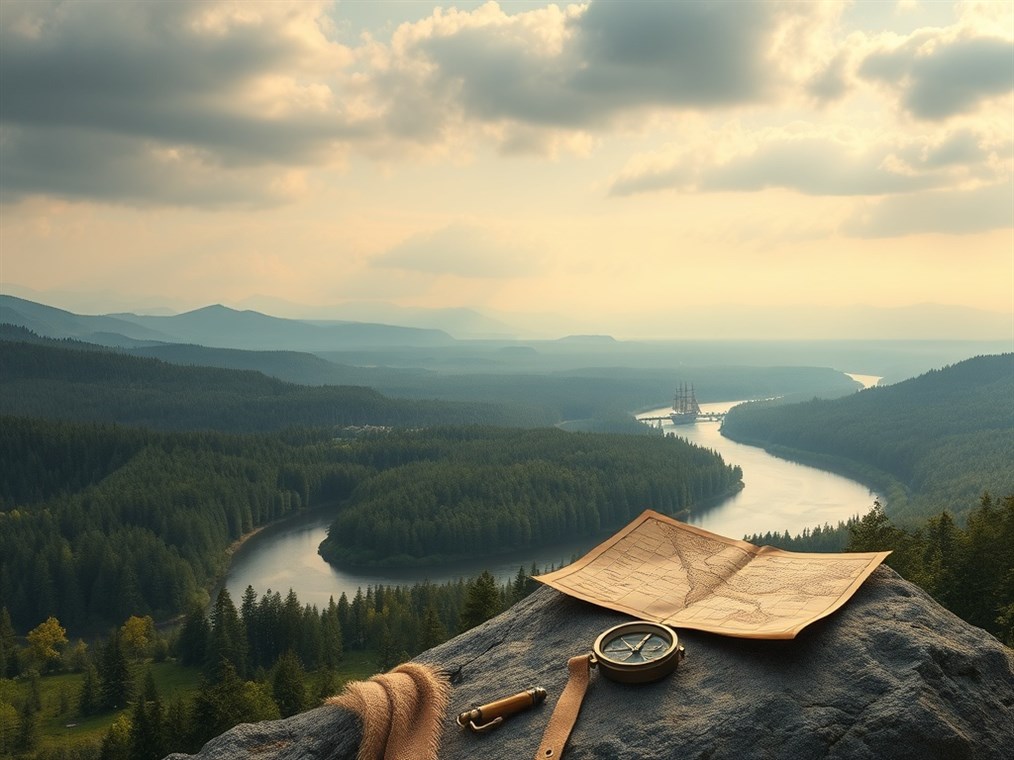
The Voyages of Samuel de Champlain: More Than Just a Mapmaker
FactsThe Voyages of Samuel de Champlain: More Than Just a Mapmaker
Samuel de Champlain, they called him the “Father of New France,” and honestly, it’s a title well-earned. Born in France way back around 1574, this guy wasn’t just some explorer; he was a soldier, a cartographer, a leader – a real Renaissance man of the New World. He didn’t just stumble around; he meticulously mapped and documented everything, giving Europeans their first real glimpse of what is now Canada and parts of the US. Think of him as the original Google Maps, but with way more grit and a lot less satellite technology.
His first taste of North America came in 1603, tagging along on a fur-trading trip led by François Gravé Du Pont. This trip? Total game-changer. Champlain was like a sponge, soaking up knowledge, charting the St. Lawrence River with incredible precision, and observing the local Indigenous cultures. It’s said he could practically feel the landscape, predicting geographical features with uncanny accuracy. They went as far as Montreal, and when he got back to France, he wrote a book about it called “Des Sauvages.” Talk about a travel blog before blogs were even a thing!
Then came Acadia in 1604. Picture this: Champlain sails off with Pierre Dugua de Mons, dreaming of planting a French colony. He explores the Bay of Fundy, creating the first European “you are here” sign for the area. Three brutal winters in Acadia tested his resolve, but he kept going, charting the Atlantic coast all the way down to Massachusetts Bay and Cape Cod, hunting for the perfect spot to settle. He even named a particularly nasty bit of coastline “Mallebarre” – which basically translates to “bad bar.” Can’t say I blame him!
But here’s where things get really interesting: Quebec City. In 1608, Champlain, ever the strategist, founded Quebec City. As de Monts’ right-hand man, he set up a fortified trading post along the St. Lawrence, a spot he hand-picked for its prime location and control over the booming fur trade. It was the start of something big – the beginning of French colonization in the St. Lawrence River valley.
Now, Champlain wasn’t just about drawing maps and building forts. He understood that making friends was key. He built alliances with the Montagnais, Algonquin, and Huron (Wendat) peoples, creating a massive trade network. But, like any good historical drama, there was conflict. These alliances dragged him into existing squabbles, especially with the Iroquois Confederacy. In 1609, he found himself on Lake Champlain, joining his allies in a battle against the Iroquois. Not only did he become the first European to map the lake, but he also got a front-row seat to some serious intertribal warfare. He even took part in more military campaigns in 1610 and 1615, and let’s just say he didn’t come out unscathed.
Champlain’s ambition didn’t stop at the St. Lawrence. He ventured up the Ottawa River in 1613, pushing towards the Great Lakes. By 1615, he’d made it to Lake Nipissing, the French River, and finally, Georgian Bay on Lake Huron – his first glimpse of the Great Lakes! These explorations weren’t just about bragging rights; they provided vital geographical intel and cemented French alliances with Indigenous nations in the region.
Later in life, around 1620, King Louis XIII basically told Champlain to focus on running New France. He didn’t have a fancy title, but he was the de facto governor. Then, in 1629, things went south. The English captured Quebec, and Champlain had to surrender and head back to France. But don’t worry, this story has a happy ending (sort of). In 1632, the colony was returned to France, and Champlain was back in charge. He died in Quebec on Christmas Day, 1635, leaving behind a legacy as an explorer, a mapmaker, and the ultimate “Father of New France.”
Today, you’ll find Champlain’s name all over Canada and the US. Lake Champlain, for starters. And countless landmarks and memorials pay tribute to his incredible life. His maps and writings? Still invaluable for understanding the early days of North America. He laid the groundwork for French culture in North America and helped shape the Quebec we know today. Not bad for a guy with a boat and a dream.
You may also like
Disclaimer
Categories
- Climate & Climate Zones
- Data & Analysis
- Earth Science
- Energy & Resources
- Facts
- General Knowledge & Education
- Geology & Landform
- Hiking & Activities
- Historical Aspects
- Human Impact
- Modeling & Prediction
- Natural Environments
- Outdoor Gear
- Polar & Ice Regions
- Regional Specifics
- Review
- Safety & Hazards
- Software & Programming
- Space & Navigation
- Storage
- Water Bodies
- Weather & Forecasts
- Wildlife & Biology
New Posts
- Diving Deep into Tangerine: More Than Just a Sunny Locale
- Jamaica Backpack Daypack Pockets Shopping – Review
- TEOYETTSF Climbing Backpack Multifunction Military – Buying Guide
- The Curious Case of Cavendish’s Classroom: Where Did This Science Star Study?
- Dragon Backpack Insulated Shoulder Daypack – Buying Guide
- ROCKY Hi-Wire Western Boots: A Rugged Review After a Month on the Ranch
- Vertical Curbs: More Than Just Concrete Barriers
- Regatta Modern Mens Amble Boots – Honest Review
- YMGSCC Microfiber Leather Sandals: Beach to Boardwalk, Did They Hold Up?
- Tangier: More Than Just a Backdrop in “Tangerine”
- DJUETRUI Water Shoes: Dive In or Doggy Paddle? A Hands-On Review
- Barefoot Yellow Pattern Hiking 12women – Is It Worth Buying?
- Koa Trees: How Fast Do These Hawaiian Giants Really Grow?
- DDTKLSNV Bucket Hat: Is This Packable Sun Shield Worth the Hype?